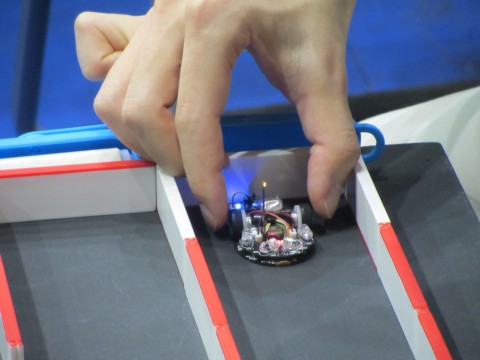There has been some talk of changing the schools micromouse competitions. I am in favour of a more flexible line-following class of competitions. While doing a bit of research, I found many examples of the kind of thing I had in mind. Given that these competitions are much more popular in South East Asia, I was not surprised to find that most of the information and examples were to be found in Japan. What I was surprised to find was just how well advanced the state of the art is over there. Have a look at this video of a contestant to see what kind of performance might be possible: High Speed Line Follower (it takes a little while to appear in your browser). Sorry, I have no details about who this is but I believe it was taken at the 2007 Japan micromouse event.
- Post author:Peter Harrison
- Post published:July 9, 2008
- Post category:Line Follower
- Post comments:4 Comments
You Might Also Like
This Post Has 4 Comments
Leave a Reply
This site uses Akismet to reduce spam. Learn how your comment data is processed.

The competition held in Japan is called robotrace. I think the video you posted can be found in the following blog http://roboroboblog.blog61.fc2.com
He is really good, and won the second place in the competition last year. He used a fan to make the line following robot attached to the ground and therefore it can make high speed turns. The idea can no longer be used this year, because they want to see more creative ideas and techniques in line following robots.
This is the link which shows how a fan is used to make the line follower attached to the ground. Very very interesting!!!
http://f.flvmaker.com/mc.php?id=bBxcPpX4__GKUTAF6Eq.PMqehLcwBpX/jEYGJBYuJLOSEhRXPKHlXbvu73Ci86qIZgVPU3bkZol/U0G9gfg7hzs
I had looked at that blog and, now I check, that was where I had the link from. Unfortunately, relying as I do on the Google translator, I get quite confused as a result.
It seems to me that the fan was a fairly creative idea in itself. Like many though, unless everyone can develop and apply the idea, the competitive advantage becomes to great to overcome.
The way they use the fan to increase the friction between the tyre and ground is really creative. But the committee thinks that the technique would limit the chance for new ideas in mechanical design and control algorithms to come up, because the technique dominates the competition in last two years. The rules in the robotrace provide hints at points in the route where curvature changes. Therefore, if any line following robot can take full advantages of these hints, (e.g. use encoders to keep the entire route in memory), it may find a better way to control the line following robot.